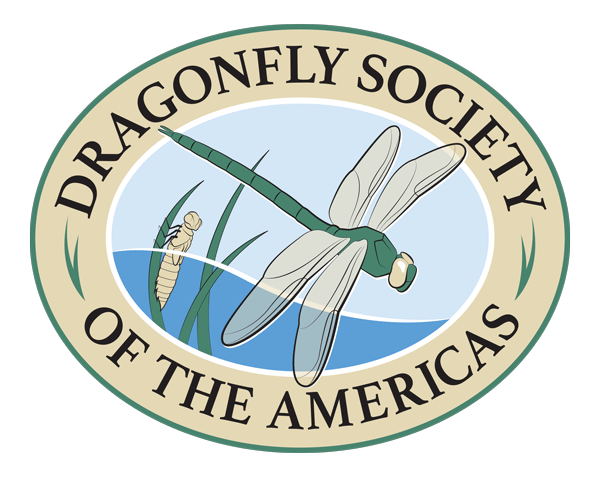October Species of the Month: Filigree Skimmer (Pseudoleon superbus)
Filigree Skimmer (Pseudoleon superbus), Greg Lasley used by permission from Dragonflies of the Southwest (undated).
Our DSA October Species of the Month is the Filigree Skimmer (Pseudoleon superbus), in the Skimmer family Libellulidae. This small dragonfly (38-45 mm or approximately one-and-a-half inches plus) is usually found in streams and nearby ponds in California, and parts of the Southwest to Costa Rica. Enjoy dragonfly chaser Kathy Biggs’ tale of tracking down this exciting species.
One Ode Chaser’s Fancy
The adventure began with my desire to find an exceptionally beautiful species. It only took me and my husband Dave a decade and a half to do so.
Pseudoleon superbus, the Filigree Skimmer, is aptly named. “Superb” is part of its scientific name for good reason! Its beautiful wings do indeed look like filigree, or as the Merriam-Webster Dictionary defines it “ornamental openwork of delicate or intricate design.” Even its genus name Pseudoleon seems to refer to its being a wannabe Lion-like creature. Did Dave and I long to see one? Of course!
Filigree Skimmer (Pseudolean superbus), copyright David Biggs, Rio Tuito, Yelapa, Jalisco, Mexico (2017).
When I wrote Beginner’s Guide to the Dragonflies of the Southwest in 2004, I first became acquainted with this beauty. Filigree Skimmers then were only known within the United States from Arizona and New Mexico, although since then they have been added to the Texas, Utah, Colorado, Oklahoma, and California lists.
The hunt was on. We went to New Mexico for the Dragonfly Festival in the early 2000s looking for it with no luck. In 2007, we gave a walk for the Boyce-Thompson Arboretum in Arizona. On our hike, others saw a Filigree Skimmer, but not us! We hoped to find it during the Arizona 2017 Dragonfly Society of the Americas field trips. Nope!
In 2014, we went to Yelapa, Jalisco, Mexico, for Dave’s choir trip.
Rio Tuito, Yelapa, Jalisco, Mexico, copyright Kathy and David Biggs (2020)
We loved both the place and the nature so much that in 2016, we started spending part of each of our winters there. Guess what species is common in Yelapa? Yes! The Filigree Skimmer. In 2016, we spent a whole month there. But we couldn’t find one.
Then, in 2017, while in Yelapa, I finally saw a distant Ode on the Rio Tuito; it had black extensively on the wings! Was it a Black-winged Dragonlet or a Filigree Skimmer? I wasn’t sure. The next day, I canvassed the area and, yes, I saw it again. It was a Filigree Skimmer! As I approached the rock it was perched behind to take a photo, it flew off. Thwarted again!
Rio Tuito, Yelapa, Jalisco, Mexico (2020), copyright Kathy and David Biggs.
The next day, I set out early downriver to the exact spot where I’d last seen it. I figured that if I could get there before the Filigree appeared, it wouldn’t be frightened away. I leaned against a boulder, awaiting the Filigree’s return. Hours later, I was hot, tired and hungry. I finally gave up. As I stood to leave, I noticed something I’d been sitting on. The wings of a Filigree Skimmer! It had likely been eaten by a predator. I picked up the wings and took them with me, a souvenir of my chase.
When we returned to California, I scanned the wings.
Scanned wings, Filigree Skimmer (Pseudoleon superbus), copyright Kathy Biggs (2017)
As is so often true, once you find something, it thereafter is easy to find. During the rest of our 2017 stay in Yelapa, and every year since then, we have found abundant Filigree Skimmers along the Rio Tuito in Yelapa. We discovered that not only do they often perch on dead leaves, but when seen at a distance, they look like a dead leaf.
Filigree Skimmer (Pseudoleon superbus), copyright Kathy Biggs (2017)
As a former kindergarten teacher, I have a pet name for this species: Super Bus! My hope is that you do not experience the frustration that we did when you try to find the Super Bus of all Odes.
Our guest blogger for October is Kathy Biggs, who has been a nature lover all her life. When she built a wildlife pond in her Sebastopol, California backyard in 1996, dragonflies arrived and she found her true passion. Wanting to share her passion, she developed websites for her wildlife ponds, California Dragonflies, Southwest Dragonflies and most recently A First Guide to the Dragonflies of Jalisco. The websites matured and grew into Kathy's becoming the author of California’s first Dragonfly Guide, Common Dragonflies of California, the Southwest’s first dragonfly guide, Common Dragonflies of Southwest, a dragonfly color and learn book and her latest publication, Dragonflies of the Greater Southwest. Kathy manages the Groups CalOdes and Building Ponds for Wildlife. Kathy is the vetter for California on Odonata Central, and iNaturalist California and Jalisco, MX. She hopes she can inspire you to get to know the dragonflies and the wetlands that support them.







